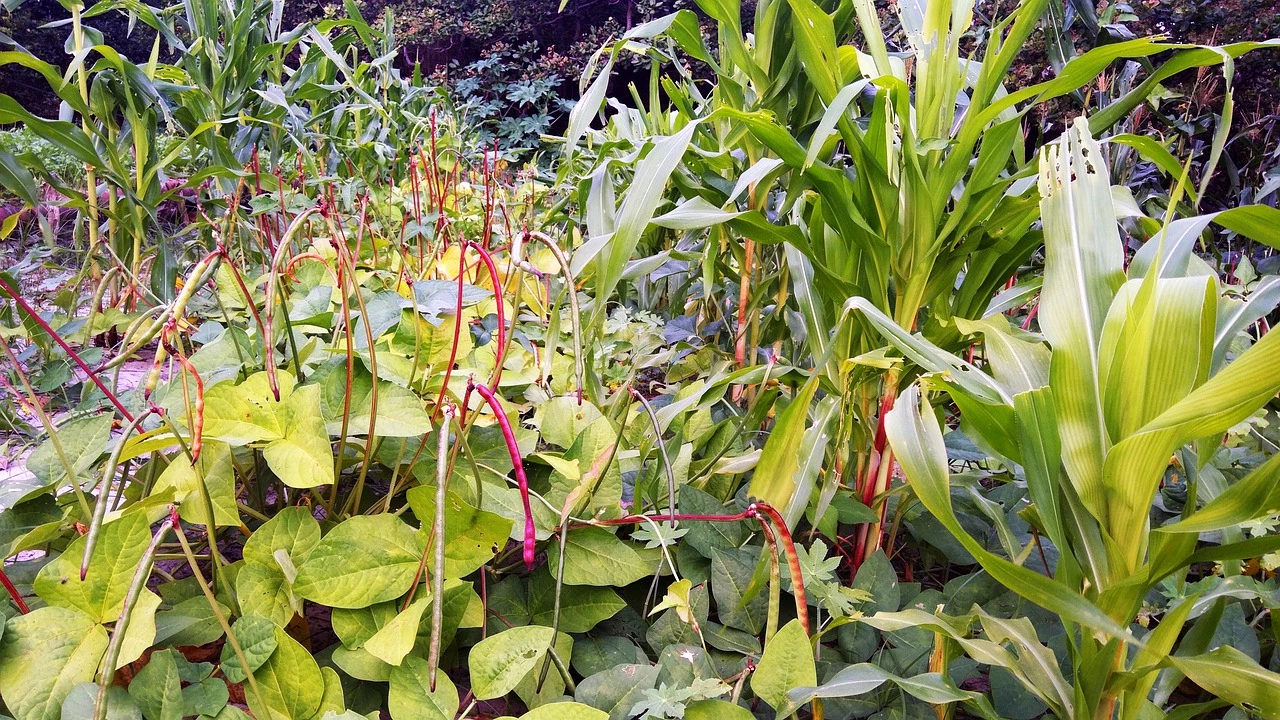
Marie's Milpa: a planting plan
Mixed cultivation is the cultivation of different plant species that have a positive influence on each other. This is the opposite of monoculture and brings more variety to your vegetable patch. What can be a real mess for many people when planning their beds is nothing more than a child's play exercise with the tools in the Fryd app. As part of our themed weeks on mixed cultivation, we are presenting five example beds that you can use as inspiration for your own mixed cultivation. Today we're talking about one of the oldest mixed cultures of all: milpa.
A very well-known and popular mixed crop with a long tradition is the milpa mixed crop. This historic mixed crop originates from South America and includes corn, beans and pumpkin. The three components, also known as the "three sisters", complement each other in the vegetable patch in an unusual way. The maize plants are planted before the runner beans, giving them a head start in growth and serving as a climbing aid later on. At the same time, the beans improve the soil thanks to their nitrogen-enriching properties, which benefits the two heavy feeders, maize and pumpkin. In contrast to beans, maize has relatively shallow roots so that the two planting partners do not get in each other's way underground.

A circle of beans is placed around each corn plant (e.g.'True Gold'); suitable varieties here include 'Blauhilde' or 'Neckargold'. The colorful pods of the purple and yellow beans (wax beans) are a real eye-catcher and bring more color variety to the vegetable patch. If you don't fancy the classic yellow sweetcorn, you can also choose colorful varieties. A pumpkin is planted in the traditional milpa, offset from the maize plants. This creeps over the bed and shades the ground between the maize and bean plants. As an alternative to pumpkins, you can also plant other pumpkin plants such as zucchinis. Marie has planted a Hokkaido pumpkin 'Red Kuri' and a spaghetti pumpkin 'Vegetable Spaghetti', as well as a zucchini'Gold Rush' in her milpa bed. You can fill the gaps with herbs and flowers. Savory (here: summer savory) goes well next to beans because it keeps the bean aphid away. You can also plant other herbs such as parsley and oregano. So that you can harvest the herbs easily, it is better to plant them at the edge. The remaining gaps can be filled with marigolds and borage.
Fancy a mixed milpa crop? We have already added all the varieties of Marie's Milpabeet to your shopping cart - all 100% organic, of course. You can also edit the selection according to your wishes: Click here to go to the shopping cart!
Would you like to receive helpful gardening tips all year round and plan your own beds optimally? Then register here or download the Fryd app for Android or iOS.
Fryd - your digital bed planner

Annabell
Annabell is studying agricultural biology at the University of Hohenheim. She also enjoys gardening in her private life, spends a lot of time in nature and loves to be creative.
Learn MoreCurrent Topics in the Community

Liked 7 times
💚🦋🐜🐌🐛🐞🐝🌻🦋💚
Show 1 answerHi, I'm currently creating a plan and have noticed that I can't enter my plants as dead/harvested on my pc/notebook, I can only delete them. Is that the case or am I just too blind to find it? Thanks for your feedback and a happy new year ^^


Liked 12 times
My homemade beeswax candles made from my own beeswax Now the problem is that I can no longer reach my vegetables - even the digging fork is frozen solid - I can only harvest Brussels sprouts and kale
Show 2 answersPopular Articles

Overwintering Parsley: How to Do It Successfully

How to Grow Lettuce in Winter: Varieties, Sowing, Harvesting

Growing Sage Plant: Tips for Sowing and Harvesting

What Herbs Can Be Planted Together?

Create & Design a Permaculture Garden

Overwintering Plants: Tubs, Pots and Raised Beds

Pruning, Fertilizing & Propagating Currants: Care Tips

Pruning Raspberries: How to Do It

Vegetable Garden With Greenhouse: How to Use Greenhouse Effect

Winterizing Beds and the Garden: How to Do It